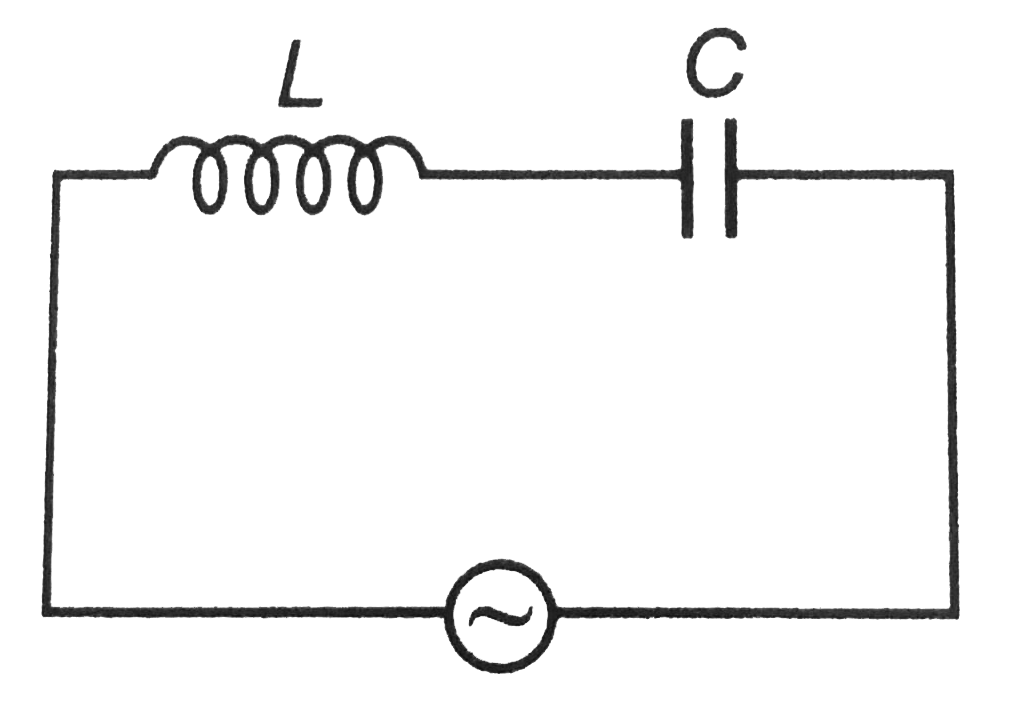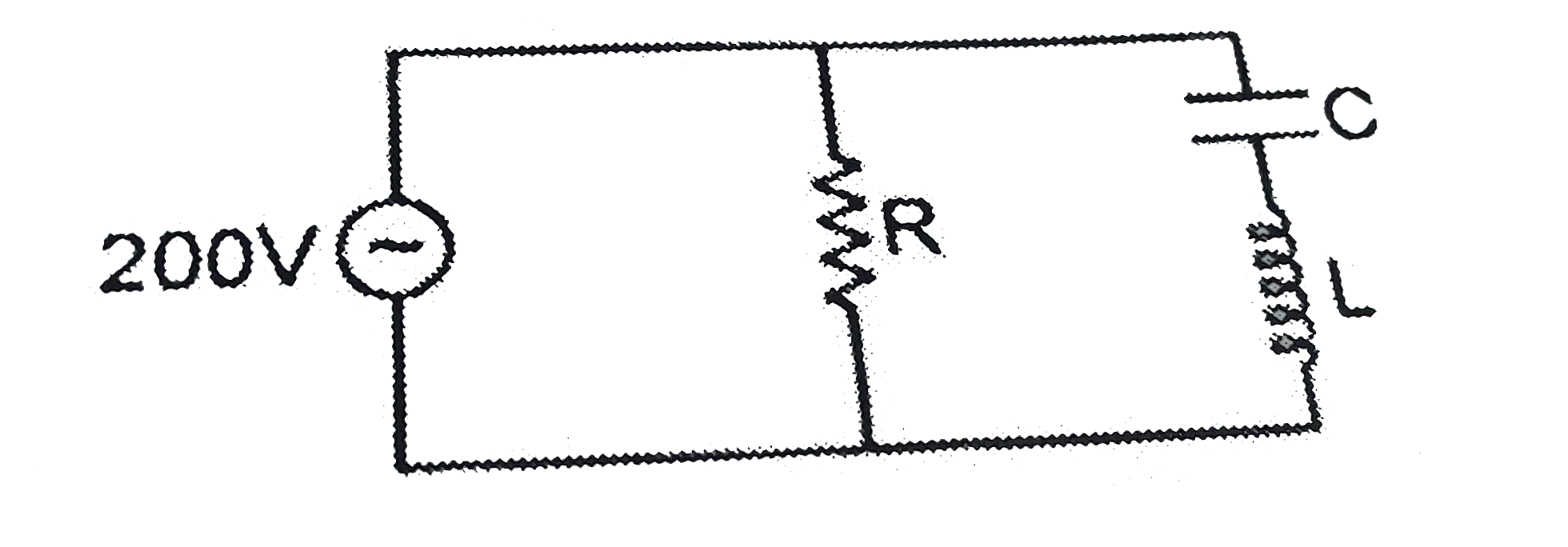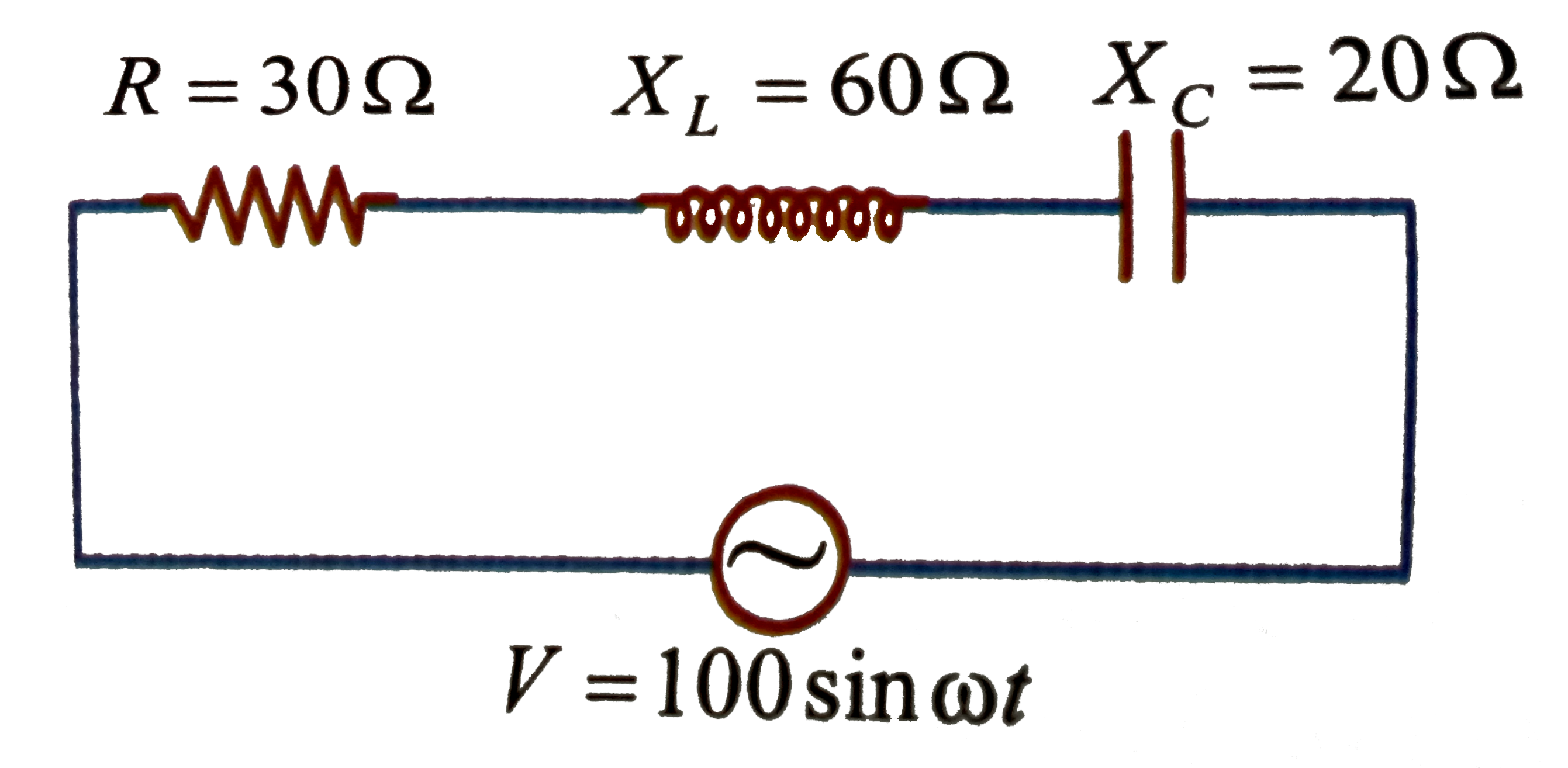In an AC series L−C−R circuit, applied voltage is
V=(100√2sin(ωt+45∘))V
Given that, R=30Ω, XL=50Ω and XC=10Ω Now match the following two columns.

Video Solution
Text Solution
The correct Answer is:(A-r); (B-p) ; (C-q); (D-s)
As, Z=√R2+(XL−XC)2=50Ω
I=VZ=100V50Ω=2A
P=I2R=120W
VR=IR=60V
VL=IXL=100V
|
Updated on:21/07/2023
Similar Questions
Knowledge Check
- Question 1 - Select One
In an L-C-R series circuit R = 10Ω,XL=8Ωand XC=6Ωthe total impedance of the circuit is -
A10.2ΩB17.2ΩC10ΩDNone of the above - Question 2 - Select One or More
In an AC series circuit, R=10Ω,XL=20Ω and XC=10Ω.Then, choose the correct options
AVoltage function will lead the current functionBTotal impedance of the circuit is 10√2ΩCPhase angle between voltage function and current function is 45∘DPower factor of circuit is 1√2 - Question 3 - Select One
In a series L-C-R circuit XL350Ω,XC=200ΩandR=150Ω.
A0∘B30∘C15∘D45∘
Match the following two columns for L-C-R series AC circuit.
 View Solution
View SolutionIn series LCR circuit 3=ΩXL=8Ω,XC=4Ω, the impendance of the circuit is:
View SolutionIn a series L−C circuit, the applied voltage is V0. if omega is very low, then the voltage drop across the inductor VL and capacitor VC are
 .View Solution
.View SolutionIn the circuit diagram show, XC=100Ω,XL=200Ω,&R=100Ω
 View Solution
View SolutionAn alternating voltage V=100sinωt is applied across an LCR circuit as shown. At the instant when voltage drop across source is 50√3 volts then at that instant
R=30Ω XL=60Ω XC=20Ω
 View Solution
View Solution


